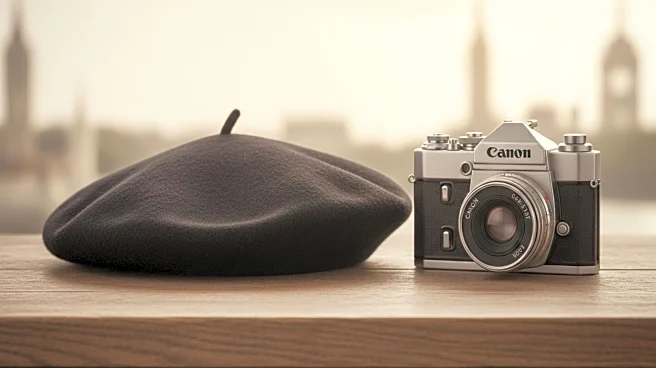What's Happening?
Researchers have uncovered the oldest shell jewelry workshop in Western Europe at the Palaeolithic site of La Roche-à-Pierrot in Saint-Césaire, France. The site dates back to the Châtelperronian period, between 55,000 and 42,000 years ago, and includes pierced and unpierced shells, pigments, and stone tools. This discovery provides new insights into the cultural practices of the Châtelperronian people, who lived in modern-day France and northern Spain during the Upper Paleolithic era. The presence of shells without holes and the lack of wear marks on some punctures suggest the site was used for jewelry making. The findings raise questions about the identity of the Châtelperronian people, whether they were Neanderthals, Homo sapiens, or a mix of both, as they coincide with the period when Homo sapiens began migrating from Africa into Europe.
Why It's Important?
The discovery of the shell jewelry workshop is significant as it sheds light on the symbolic expression and cultural variability of early human societies in Western Europe. The presence of pigments and shells suggests advanced trade networks or significant human mobility, indicating complex social interactions. This finding contributes to the understanding of the cultural and biological interactions between Neanderthals and Homo sapiens during the Upper Paleolithic era. It also highlights the role of symbolic behavior in social differentiation and identity affirmation, which are typically associated with Homo sapiens. The research challenges existing theories about the Châtelperronian people and their cultural practices, suggesting they may have been influenced by or part of the earliest dispersals of Homo sapiens into the region.
What's Next?
Further research is needed to disentangle the potential scenarios regarding the makers of the Châtelperronian artifacts. The study suggests that interactions between diverse biological and cultural groups may have sparked shared symbolic behavior during the European Upper Paleolithic. Researchers aim to gather more definitive evidence to understand the unique symbolic behavior of Châtelperronian groups and their development within a diverse biocultural landscape. This ongoing research could provide deeper insights into the cultural evolution and migration patterns of early human societies in Europe.
Beyond the Headlines
The discovery of the shell jewelry workshop not only provides insights into prehistoric cultural practices but also raises ethical and cultural questions about the interpretation of ancient artifacts. Understanding the symbolic behavior of early human societies can inform modern discussions on cultural identity and heritage. The findings may also influence contemporary jewelry design, drawing inspiration from ancient techniques and materials used by the Châtelperronian people.











